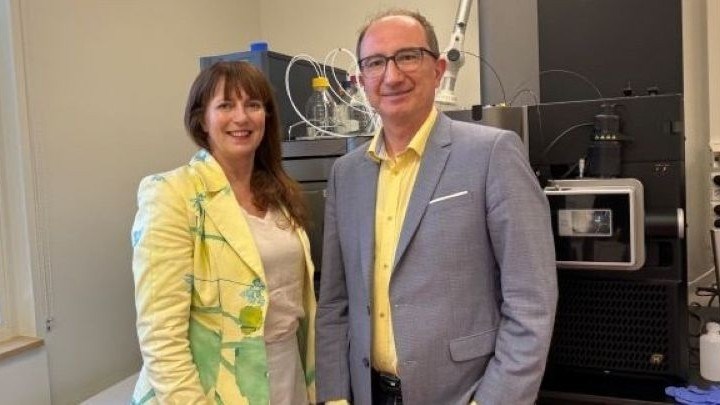Unique study on PFAS in children’s brains

Tuulia Hyötyläinen and Matej Orešič at Örebro University are studying how environmental factors affect the immune system, obesity and brain development.
For the first time, researchers at Örebro University, together with colleagues at the University of Turku and Turku University Hospital, can show how PFAS in pregnant women can be linked to changes in their children’s brains five years on. The findings have now been published in Lancet Planetary Health.
“Our study shows a clear link. This is the first time exposure to PFAS during pregnancy has been followed up using full brain MRI scans of children several years later,” says Matej Orešič, professor at Örebro University.
The pioneering study used brain imaging to examine the children’s entire brains for PFAS exposure several years after birth. Researchers found links between higher levels of PFAS in pregnant women and changes in both brain structure and the connections between different areas of the brain in their children several years later.
Can lead to health problems
“This is an important piece of the puzzle in understanding how chemicals affect children’s development. We are gradually advancing our knowledge of how various environmental factors interact and can lead to health problems,” says Tuulia Hyötyläinen, professor at Örebro University.
Matej Orešič and Tuulia Hyötyläinen at Örebro University are studying how environmental factors affect the immune system, obesity and brain development. In a life-course perspective, health is affected by our total exposure to chemical, biological and social factors, also known as the exposome.
Thousands of children in the study
The study was conducted in collaboration with researchers from the University of Turku and Turku University Hospital in Finland. It is part of the EU-funded project INITIALISE (Inflammation in human early life: targeting impacts on life-course health), coordinated by Matej Orešič.
The data used in the study came from the FinnBrain Birth Cohort Study, established at the University of Turku in 2011. This longitudinal study follows thousands of mothers and children from pregnancy onwards. Some of the children in the study underwent full brain scans, and the results were compared with the levels of PFAS measured in the mothers’ blood during pregnancy.
Exposure during pregnancy
PFAS are a group of chemicals used in the manufacture of products like water-repellent materials, textiles, firefighting foam, and food packaging. They are non-biodegradable and tend to stay in our bodies for some time. They are easily passed from the pregnant mother to the foetus via the placenta, exposing the unborn baby.
Pregnancy and early foetal development are considered particularly sensitive to PFAS exposure, due to the rapid growth of the brain and other organs. Previous research has shown that PFAS can affect the immune system, and these forever chemicals are believed to compromise metabolism, hormonal balance and brain development.
“Overall, our research shows that PFAS can impact brain development even at low levels. More research is needed on how chemicals impact cognition and brain function in children, as well as what the causes and effects are,” says Tuulia Hyötyläinen.
The researchers point out that individuals can make choices to avoid PFAS until more restrictive legislation is in place. Here are three pieces of advice:
- Eat fish but avoid fish from lakes with PFAS contamination. These lakes are often close to towns or industries. Your municipality can tell you which lakes to avoid. Eat fewer takeaway meals and microwavable food in paper packaging that are oil and water repellent. Avoid cooking using non-stick cookware.
- Avoid makeup, soap and beauty products with PFAS. In the list of ingredients, the substances often appear as PTFE, “…perfluoro...” or “...polyfluoro...”.
- PFAS are often found in functional clothing and shoes that are water repellent, water resistant and breathable. There are water-repellent materials, furniture covers and similar products that do not contain PFAS. Since most PFAS are released during manufacture, second-hand clothes can help reduce the PFAS levels in the environment.
Text: Björn Sundin
Photo: Björn Sundin
Translation: Charlotta Hambre-Knight
